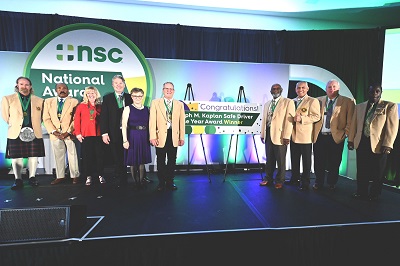Investing in technology to reduce workplace musculoskeletal disorders, or MSDs, improves both worker wellbeing and an organization’s bottom line, but initial research findings from NSC suggest employers may not have the access and knowledge they need to effectively assess and implement these risk-reducing technologies. The MSD Solutions Lab has published a new white paper, Emerging Technologies for the Prevention of Musculoskeletal Disorders, to help employers navigate the evolving technology marketplace.
This paper references nearly two dozen academic publications to assess the benefits of the most common emerging safety technologies: computer vision, wearable sensors, exoskeletons, autonomous and semi-autonomous materials handling equipment and extended reality. The MSD Solutions Lab also interviewed executives from a range of sectors, including agriculture, logistics and manufacturing, to better understand industry-specific MSD concerns and highlight successful applications of emerging technology.
Notable findings from the report include:
● Computer vision may be a helpful tool for large organizations, so they can more effectively aggregate and analyze ergonomic risks across an enterprise
● In instances where implementing engineering controls is not financially feasible, workers may benefit from the use of wearable sensors, which can provide real-time haptic feedback to reduce back injuries caused by poor posture, over-reaching and improper lifting
● To reduce MSD risk caused by manual materials handling, organizations may consider adopting passive exoskeletons, which have been shown to reduce muscle activity by up to 40% and, in one case study, decreased worker fatigue by 45% and boosted organization output by nearly 10%
● While Industry 4.0, characterized by the widespread use of computerization, big data and artificial intelligence (AI) in the workplace, is still ongoing, the next phase of advancement – Industry 5.0 – has already begun, prompting employers to dedicate a greater emphasis on harmonizing human ingenuity and automation in the workplace
Protecting Lone Workers
Lone worker practices have increasingly become more common in modern workplaces, with an estimated 15% of today’s employees reportedly working by themselves. However, working in isolated environments may also increase individuals’ risk for serious injuries and death on the job. Recognizing the emergence and severity of this issue, the Council’s Work to Zero initiative released a new white paper Using Lone Worker Monitoring Technology to Protect Workers, to help employers identify and implement new solutions to keep their workers safe.
The report evaluated findings from several academic databases, as well as two case studies, to specifically assess the use of worker monitoring technologies, ranging from fall detection devices and proximity sensors to mobile apps and panic alarms, in remote settings. These types of technologies can be ideal for lone workers in high-risk industries, such as construction, mining or agriculture. NSC identified three key benefits for any isolated work environment, including:
Enabling two-way communication. The majority of lone workers report frequently working outside of cell phone coverage areas. Monitoring devices, many of which are equipped with GPS capabilities, address this gap enabling employers to stay connected to their workers to take immediate action in the event of an emergency.
Enhancing safety capabilities. Many monitoring devices available to employers are packaged with additional EHS functionalities that can detect and alert the wearer to hazardous situations, such as gas emissions, thermal exposure and proximity to dangerous machinery.
Increasing cost-savings. Monitoring devices may help streamline the otherwise cumbersome task of checking in with lone workers through email, phone calls or calendars, and ultimately increase overall efficiency.





